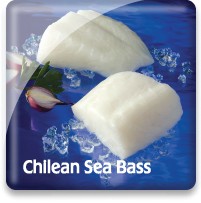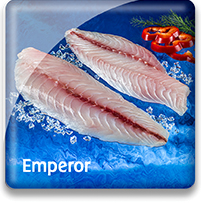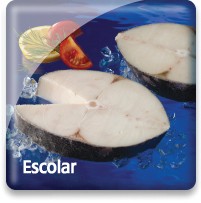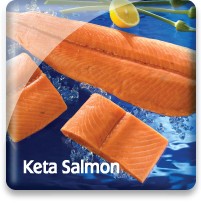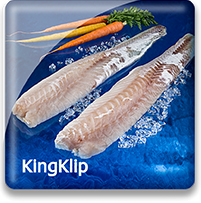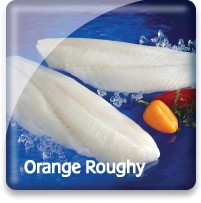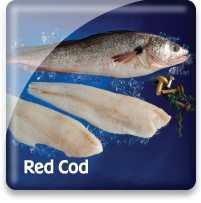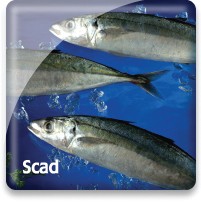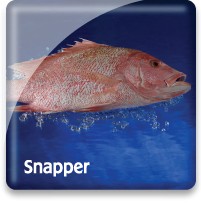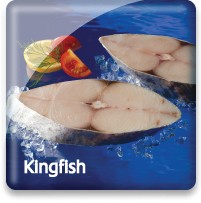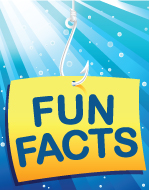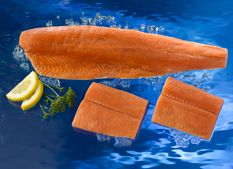
Pink Salmon

Market Name: Eating QualitiesThe meat of the pink salmon is leaner, paler, and smaller flaked than most other salmon species. They also have a less oily taste than other salmon species. It is optimal for canning and further processing. Grilling or frying could dry out this lean fish, its manner of preference in most dishes is marinated or cooked.
Chum salmon take their name from the Chinook term meaning “spotted” or “marked,” while pink salmon are named for the color of their flesh.
|
Description & CharacteristicsPink salmon are the most abundant of the Pacific salmon species. The smallest of the salmon, these easily distinguishable fish possess the smallest scaled of the species. They range in size from 3 to 5 lbs, and can be found as far south as the Puget Sound in Washington state and as far north as the Mackenzie River in Canada. They are also very abundant in Asia, throughout Russia, China and Japan.Pinks, like all other salmon, are anadromous; traveling out into the ocean to live most of their life before returning to their home river to spawn and die. Their lifespan is only two years, the shortest of any Pacific salmon species. Because of this, they have the shortest migration pattern of all. Additionally, as a result of their two-year life, odd and even number years-run do not typically interact or interbreed with fish of opposite run. Research has also shown that pinks returning on the odd-years tend to be larger and more plentiful than fish of the even-years. The meat color of the pinks is quite different than that of its salmon cousins. It is paler than the other species and does not possess the unique orange color of salmon. Instead, its meat is pink, hence their name. It is also typically a softer meat and more delicate in comparison to all other salmon. Pink salmon are the most abundant of the Pacific salmon species. The smallest of the salmon, these easily distinguishable fish possess the smallest scales of the species. They range in size from three to five pounds, and can be found as far south as the Puget Sound in Washington state and as far north as the Mackenzie River in Canada. They are also very abundant in Asia, throughout Russia, China and Japan. Pinks are bright silver in color with larger black spots on their back and tail fin. Although the market name denotes all pink salmon as humpbacks or “humpies,” only the males develop a humped back as they begin to spawn. Pinks, like all other salmon, are anadromous; traveling out into the ocean to live most of their life before returning to their home river to spawn and die. Their lifespan is only two years, the shortest of any Pacific salmon species. Because of this, they have the shortest migration pattern of all. Additionally, as a result of their two-year life, odd and even number year-runs do not typically interact or interbreed with fish of the opposite run. Research has also shown that pinks returning on the odd-years tend to be larger and more plentiful than fish of the even-years. The meat color of the pinks is quite different than that of its salmon cousins. It is paler than the other species and does not possess the unique orange color of salmon. Instead, its meat is pink, hence their name. It is also typically a softer meat and more delicate in comparison to all other salmon.These characteristics, in addition to their abundance, and very brief harvesting season, make pinks exceptionally suitable for canning. They are an extremely popular canned item, and it has been suggested that as much as 75–85 percent of the pinks caught are canned. For this reason, in many areas, especially Alaska, pinks are called the “bread and butter” fish. Pinks are a desirable item in other value-added sectors as well. Items such as roasts, burgers, marinated fillets, and even sausages from salmon are gaining popularity. Their versatility and inexpensiveness has made them a very well-liked item in the southeastern United States. Canned products come in 3.75 oz net weight, 7.5 oz net weight, 14.75 oz net weight and 64 oz net weight.
The few pinks that are kept whole are headless, dressed pinks are normally graded 2–5 lbs, or 3–5 lbs, and 5–up lbs. Pink fillets are graded 1-2 and 2-3 lbs. Portions are graded 4, 6, and 8 ounces. Smoked items are available as well as many roe and egg products. The desirability of their roe is only surpassed by that of Chums. Other Resources |
Handling Instructions for Pink Salmon
Pink salmon should be stored frozen at or below 0°F (-18°C) and then thawed properly when ready to cook. Our salmon portions and fillets are packed IQF and individually vacuum packed. The frozen shelf life of our pink salmon is 18 months. Links to proper seafood handling instructions: NOAA - Fish Watch: Handling Seafood and A Consumer Guide to Safe Seafood Handling.
Thawing Pink Salmon
Pink salmon portions and fillets should be removed from their vacuum packs or poly wraps, placed in a tight fitting plastic bag or covered container and placed under refrigeration between 33 and 39°F until they are completely thawed. This thawing process takes between 12 and 24 hours to be completed
Important Instructions for Pink Salmon
Pink salmon should be used immediately or continued to be held under the proper refrigeration and consumed within 2-3 days.
The Federal Food, Drug and Cosmetic Act now requires that all foods that are not raw agricultural commodities and that contain a major food allergen be labeled to clearly identify the name of the food source form which the allergen is derived. (21 CFR U.S.C. 343(w)(1)). The act defines eight foods, and any ingredients derived from these foods as major food allergens: Fish, Crustacean Shellfish, Milk, Eggs, Tree Nuts, Peanuts, Wheat & Soybeans. The name of the food source that must be listed on the label for fish or crustacean shellfish must be the specific type of fish or crustacean shellfish. The market names of species of fish and crustacean shellfish should be used to identify the food source of these two major food allergens. If you intend to re-pack these seafood products, be sure the allergen is declared in either one of two ways:
1) Within the list of ingredients
or
2) In a separate “Contains” statement immediately after or adjacent to the list of ingredients.
Consult the Fish and Fishery Products Hazards and Controls Guidance, Fourth Edition, Chapter 19 for more detailed information on the labeling of food allergens.
Cooking Tips
Pink salmon can be prepared using a wide variety of cooking methods. Link to cooking tips and recipes.
China
With more than 1.3 billion people, China is today the world’s most populous country. With a growing economy fueling an appetite for seafood, China has begun importing seafood for in-country consumption, as well as exporting a great deal of its production. In fact, since 2002, China has continued to export more fish and fishery products than any other country in the world, with Japan, the United States, and the Republic of Korea as its main export markets.
Chinese distant water fishing activities started in 1985 when China gained access to new fishing grounds through agreements with foreign countries. China operates vessels in West Africa, the North Pacific, and tuna longline vessels in the South Pacific. In addition, squid are harvested in the Japan Sea, the South Atlantic, and the North Pacific under Chinese-flagged vessels.
Carp are also commercially important, as are bream, shad, eel, catfish, rainbow trout, salmon, whitebait, mullet, mandarin fish, perch, sturgeon, and murrel (snakehead). Commercial shellfish include Saltwater & freshwater shrimp, river crabs, and mollusks such as mussels, clams, oysters, and freshwater snails.
With one-fifth of the world’s population, and an official government policy to promote aquaculture, China has today become an aquaculture powerhouse, now producing more than two-thirds of the world’s aquaculture species. Fish and shellfish are grown in freshwater and saltwater environments.
Go Blue! Seafood Sustainability Spectrum*Click here for an explanation of our Sustainability Spectrum 
Sustainability AssessmentSalmon is the third most popular seafood in the U.S. Sea Port sources Chinese processed Pink Salmon that is wild caught in Russia. These Russian Pink Salmon consist of both wild and hatchery enhanced stocks. At this time there is one Russian Pink Salmon fishery that is MSC certified and two that are undergoing MSC assessments. Russian Pink Salmon are mostly caught with a fishing method called purse seining, in which a large net is used to encircle a school of fish and is then “pursed up” at the bottom. This gear interacts with marine mammals and at this time it is unknown if there is ongoing harm to these populations in Russia due to the Pink Salmon fishery. Because Sea Port’s Pink Salmon is processed in China, it is important to maintain traceability, as Pink Salmon wild harvested in other countries such as Russia, may have environmental impacts associated with them. In addition to sourcing Pink Salmon from Russia, Sea Port also sources wild harvested salmon from the United States fisheries that are certified sustainable by the ASMI Responsible Fisheries Management program, by MSC, and is given a "Best Choice" rating by Monterey Bay Aquarium's Seafood Watch.
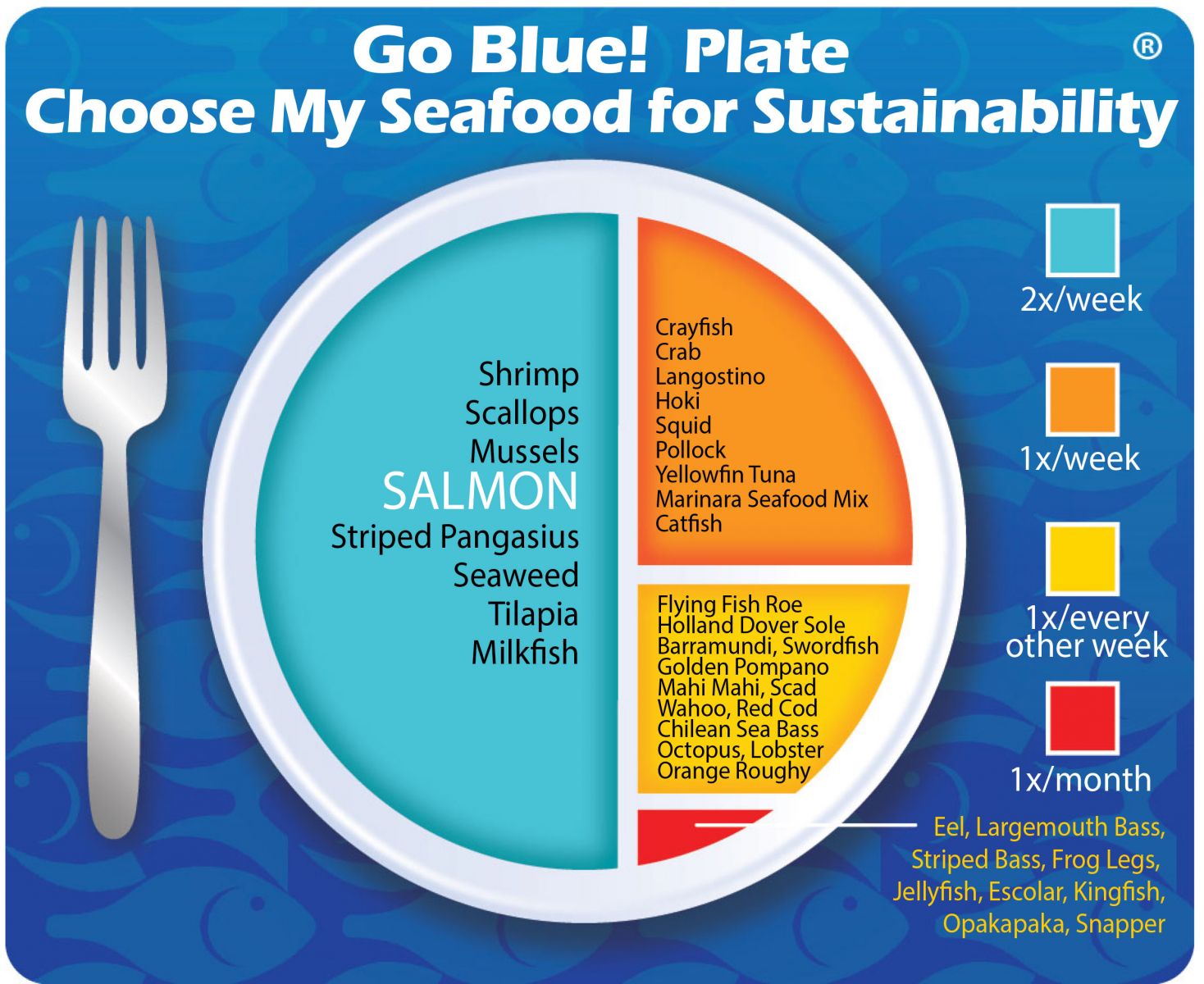
Environmental Impact: Low to Moderately lowStrong management measures are in place to ensure adequate levels of adult fish escape entrapment and can swim upriver to spawn, and that interactions with marine mammals do not negatively affect marine mammal populations.
Sustainability Improvements NeededImprovements are needed in data collection for any Pink Salmon that originate from Russia.
Actions that Sea Port is UndertakingSea Port is requiring that their suppliers provide fishing vessel identification (when available), catch methodology, and catch area information. In doing so, Sea Port is encouraging improved traceability for its Pink Salmon processed in China. This will enhance Sea Port’s ability to adequately trace Pink Salmon that originated from the Russia fisheries. Sea Port believes that, in aggregate, choosing from a diverse variety of seafood is better for sustaining the world’s seafood resources and that Pink Salmon should be a part of this variety.
We created the sustainability assessments for each of our seafood items in order to reveal the existing and potential environmental impacts and risks that are associated with producing them for human consumption. This allowed us to establish the starting position for each of our seafood items along our progressive Go Blue! Seafood Sustainability Spectrum®. These assessments are only a single snapshot in time and because of this, we will continue to assess and update the critical sustainability needs associated with our supply sources and issue updates to the Go Blue! Seafood Sustainability Spectrum® as needed. There is a growing global awareness for the need to assure the sustainability of farmed and wild caught seafood and because of this; all around the world positive changes are rapidly occurring at all levels of the seafood supply chain. We will continue to spread this growing awareness and work with our many industry partners to improve the sustainability of all seafood, which we believe is the ideal protein of choice to feed an ever growing world population. Our Go Blue! Seafood Sustainability Spectrum® serves as our compass and yardstick as we strive to move all our products forward to becoming more sustainable. Please join us in this committed quest and Catch Our Wave® to sustainability by choosing a diverse variety of responsibly produced seafood as part of your diet.
|


